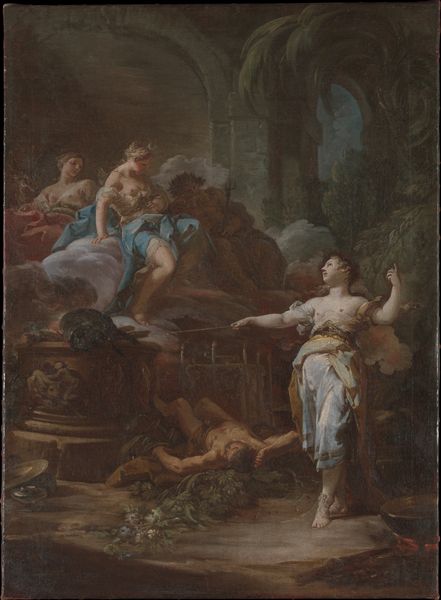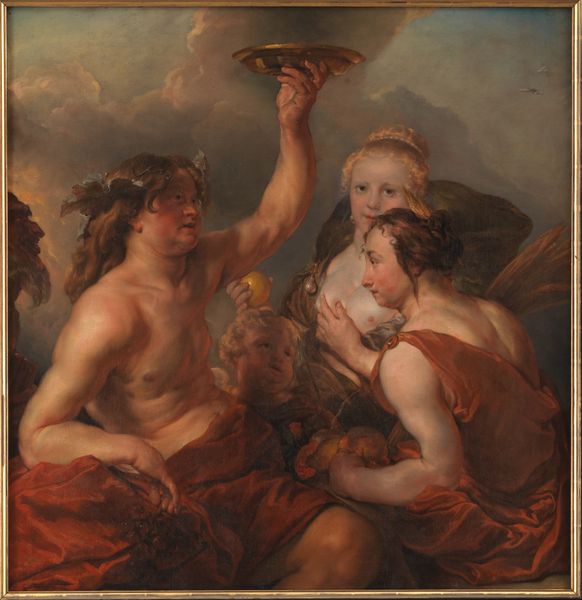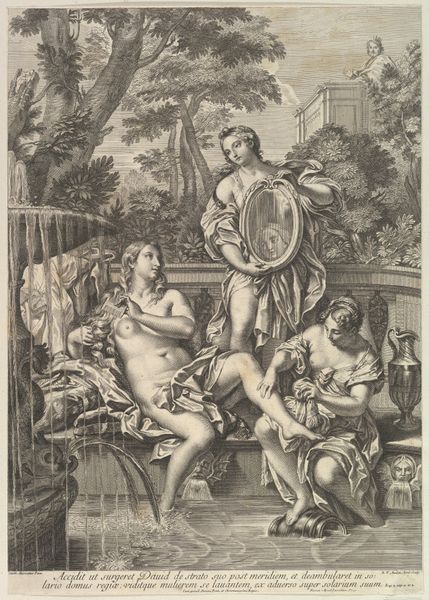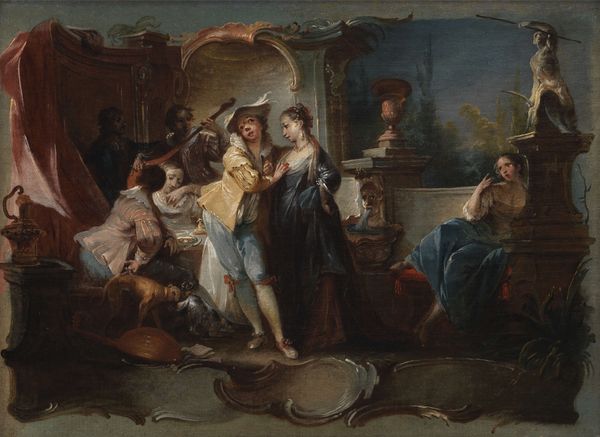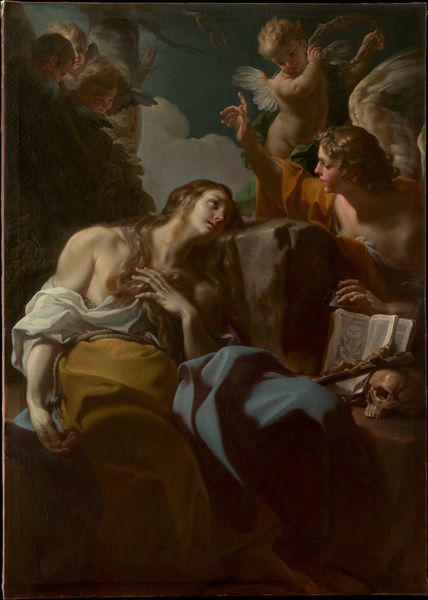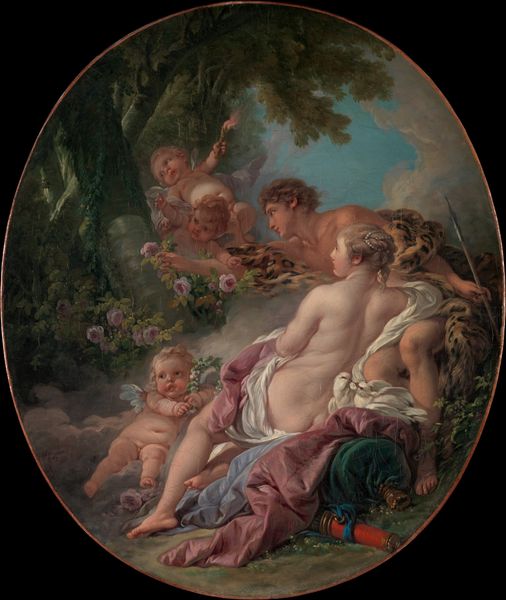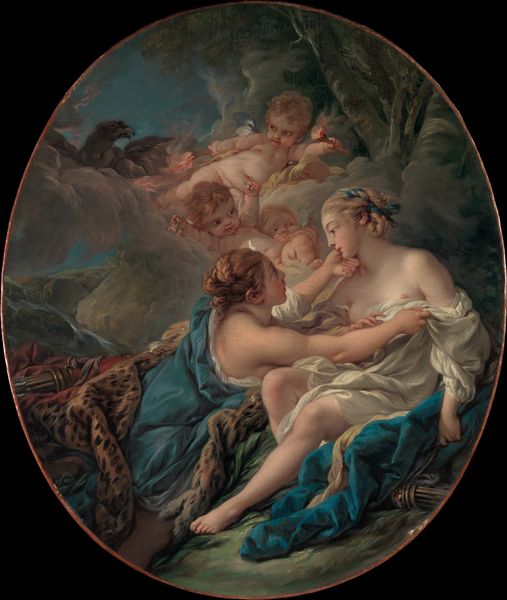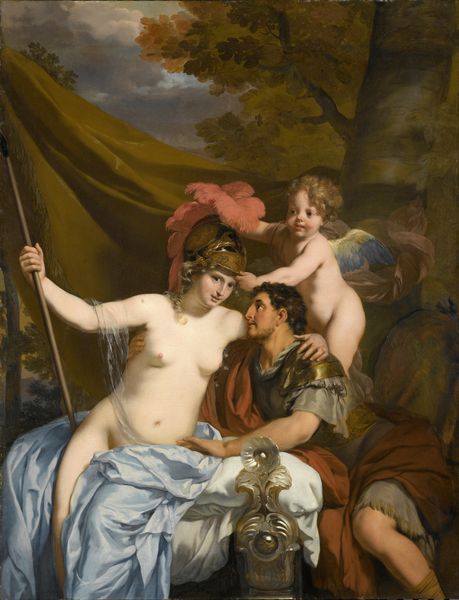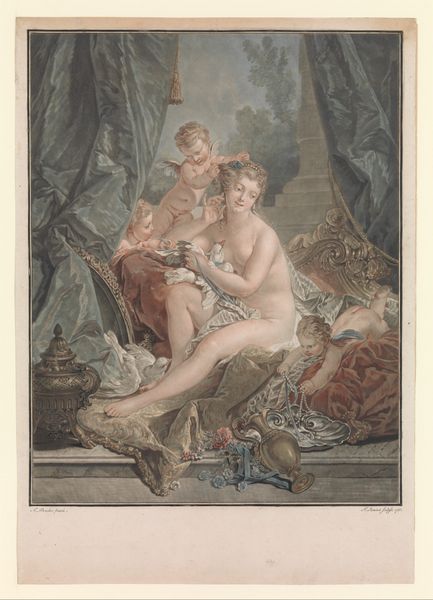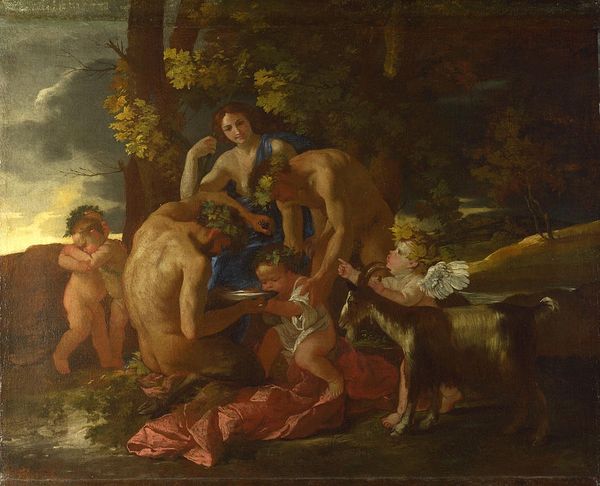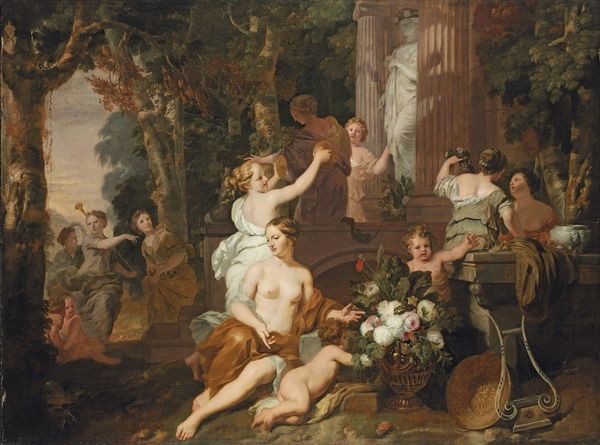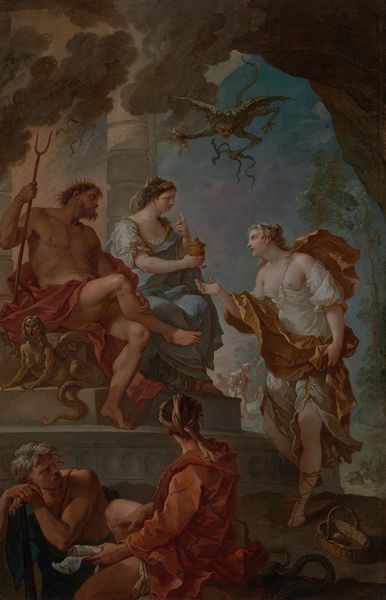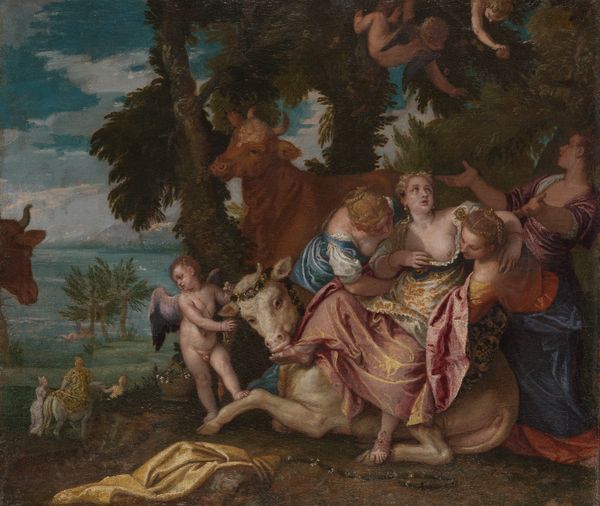
painting, oil-paint
#
allegory
#
baroque
#
painting
#
oil-paint
#
figuration
#
oil painting
#
portrait drawing
#
history-painting
#
nude
Dimensions: 53 1/2 x 38 1/2 in. (135.9 x 97.8 cm)
Copyright: Public Domain
Editor: This is Giuseppe Bartolomeo Chiari’s "Bathsheba at Her Bath," painted between 1695 and 1705. The oil painting portrays a classical scene with lush fabrics, columns, and three figures in a verdant, luxurious setting. There’s an intriguing stillness to it. What do you see in this piece that maybe I'm missing? Curator: This image pulses with veiled meanings. The act of bathing, particularly Bathsheba’s, becomes laden with both purification and vulnerability. The mirror held by the attendant, traditionally seen as vanity, can also symbolize self-awareness, but within the context of divine observation – perhaps a knowledge of being seen and judged. Editor: Judged by whom exactly? Is that what the distant architecture signifies? Curator: Exactly. The architecture is not mere background; it acts as a stage, elevating and distancing the action. Think of the original story of Bathsheba. Her beauty leads to lust, adultery, and murder involving King David. The scene thus is imbued with dramatic tension between earthly beauty and divine judgment. Are these details lost in the pretty colors and fluid strokes? Editor: No, I think that tension is still visible. The slightly apprehensive expression on Bathsheba's face hints at something beyond simple vanity. It is a compelling detail. It brings up her awareness of possible consequences. I now understand this piece conveys layers beyond the beautiful surface. Thanks! Curator: And note the colors, rich but subdued. Chiari captures the transient nature of beauty and power, using colors to symbolize a shift of something precious turning toward the tragic. Something potent for our considerations today as well.
Comments
No comments
Be the first to comment and join the conversation on the ultimate creative platform.
